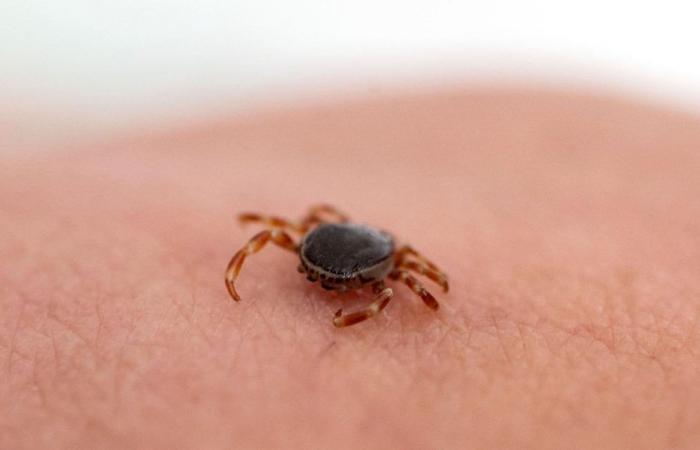For pet owners, ticks are a nasty nightmare. These little creatures cling to hair, bite, and if not treated quickly, they can transmit potentially fatal diseases.
These “small” creatures which measure between 3 millimeters and 1 centimeter can carry the bacteria responsible for Lyme disease. However, for several years, another species has worried the authorities. This is Hyalomma marginatum, a “giant” tick that can exceed one centimeter.
Recognizable by their striped legs
These, originating from Africa and Asia, were introduced into France in 2015, mainly by migratory birds. They are recognizable by their striped legs. If they worry the authorities, it is because they are likely to transmit the Crimean-Congo hemorrhagic fever (CCHF) virus, reports UFC-Que Choisir.
Read also : “Married at first sight”: only 2 marriages would have survived the 38 celebrated in 7 seasons
This can cause chills, fever, digestive problems and, in the most serious forms, bleeding or organ failure. For the moment, no human cases have been diagnosed in France, but ticks infected with the virus are present in the territory.
Bouches-du-Rhône, Var, Alpes-Maritimes…
At the end of May, Public Health France warned about the presence of the Hyalomma tick in several departments. Eleven are concerned: Corse-du-Sud, Haute-Corse, Bouches-du-Rhône, Var, Alpes-Maritimes, Ardèche, Drôme, Hérault, Gard, Aude and Eastern Pyrenees.
The National Public Health Agency therefore recommends, when going out into nature or green spaces, to cover your legs and arms as much as possible with light-colored clothing, this will make it easier to spot ticks. After walks, it is better to inspect your body to be sure you have not been bitten.
No absolute weapon against ticks
Still according to Public Health France, mosquito repellents have limited effectiveness on ticks. To remove the animals, you must use a tick remover or pliers, making sure to remove them completely.
If you experience symptoms within 14 days of the bite, you must go to the doctor and indicate that you have been in contact with a tick in order to be treated effectively. We must also be wary of “ordinary” ticks which can be contaminated by the Borrelia bacteria and transmit Lyme disease to humans.
Learn more…






